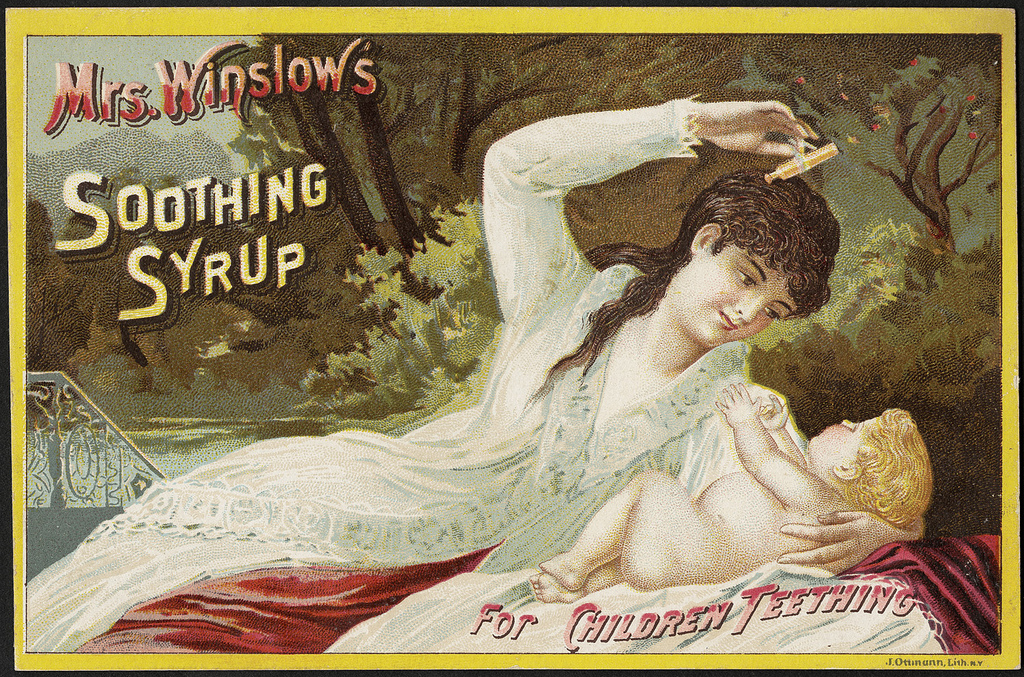
Mrs. Winslow’s Soothing Syrup was invented by Mrs. Charlotte N. Winslow in the 1840s, when she was working as a nurse for infants. It was first marketed by her son-in-law Jeremiah Curtis and Benjamin A. Perkins in 1849 in Bangor, Maine.
This was a time when there was very little in the way of government regulation of medicine, and buyers were vulnerable to being sold all sorts of fake or dangerous “medicines”.
The formula consisted of 65 milligrams of morphine sulphate per fluid ounce of syrup. Other ingredients included sodium carbonate (water softener), spirits foeniculi (alcohol), and aqua ammonia (a cleaning agent).
The syrup was widely marketed in the USA and the UK, claiming to be “perfectly harmless and pleasant to taste” and to “produce natural quiet sleep by relieving the child from pain.”
The manufacturer also claimed the syrup could help teething, regulate the bowels, and help cure dysentery and diarrhea. By 1868, more than 1.5 million bottles of the syrup were being sold annually.
Since morphine sulphate is a powerful analgesic related to heroin, the syrup was indeed more than capable of putting children to sleep – sometimes permanently. In a darkly ironic twist of fate, one advertisement claimed the parents would be “relieved of all further care of their infants.”
In addition, morphine is highly addictive, which would cause the children to crave it even more, and the parents would then administer the syrup more often, creating a vicious circle.
Mrs. Winslow’s Soothing Syrup was denounced only in 1911, when the American Medical Association marked it as a “baby killer”. However, the syrup remained available in the UK until 1930.




